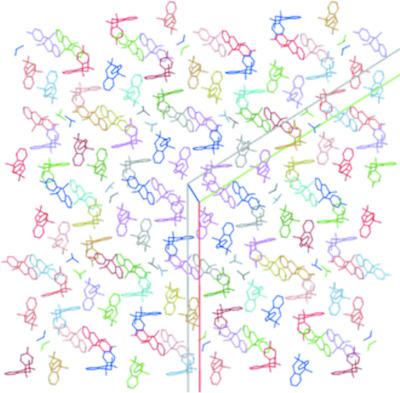当前位置:
X-MOL 学术
›
Acta Cryst. B
›
论文详情
Our official English website, www.x-mol.net, welcomes your
feedback! (Note: you will need to create a separate account there.)
Identifying and characterizing translationally modulated molecular crystal structures.
Acta Crystallographica Section B ( IF 1.3 ) Pub Date : 2020-07-15 , DOI: 10.1107/s2052520620007891 Carolyn Pratt Brock 1 , Robin Taylor 2
Acta Crystallographica Section B ( IF 1.3 ) Pub Date : 2020-07-15 , DOI: 10.1107/s2052520620007891 Carolyn Pratt Brock 1 , Robin Taylor 2
Affiliation

|
Most structural (i.e. displacive) modulations make molecules independent that had been related by translation in a phase having a smaller or centered unit cell. In the modulated structure the independent molecules are differentiated by small translations, rotations, and/or conformational changes but an approximate translational relationship is normally retained. A program has been written to identify such pseudotranslations because they can be difficult to find by eye and because they combine with each other and with lattice translations in ways that can be confusing. To characterize the pseudotranslations the program calculates their fractional translational, orientational, and conformational components as well as several quality indicators. While many pseudotranslations are obvious, others are borderline; setting tolerances for identifying a pseudotranslation proved difficult. Defaults were chosen to reproduce experience‐based judgment but they can be varied in the program input. The program was run for organic and for metallo‐organic structures with R ≤ 0.075 in the 2019 release of the Cambridge Structural Database. The frequency of pseudotranslations increases with Z′ and is approximately 50% for Z′ > 4. Some structures were found in which an identified pseudotranslation cannot correspond to a modulation. These include structures in which some but not all of the molecules are related by pseudotranslations and structures in which pseudotranslations in different parts of the unit cell have different directions.
中文翻译:

鉴定和表征翻译调节的分子晶体结构。
最结构化(即位移调节使分子独立,这些分子通过在具有较小或中心晶胞的相中翻译而关联。在调节的结构中,独立的分子通过小的翻译,旋转和/或构象变化来区分,但通常保留近似的翻译关系。已经编写了一个程序来识别此类伪翻译,因为它们很难用肉眼找到,并且因为它们彼此组合以及与晶格翻译结合在一起,可能会造成混淆。为了表征伪翻译,程序会计算其平移部分,定向部分和构象部分以及几个质量指标。虽然许多伪翻译是显而易见的,但其他的只是临界点。设置识别伪翻译的容忍度是困难的。选择默认值是为了重现基于经验的判断,但可以在程序输入中进行更改。该程序针对有机和金属有机结构运行,具有[R在2019年发布的剑桥结构数据库的≤0.075。伪翻译的频率随Z '的增加而增加,并且对于Z '> 4大约为50%。发现了一些结构,其中已识别的伪翻译不能对应于调制。这些包括其中一些但不是全部分子与假翻译相关的结构和其中单位细胞的不同部分中的假翻译具有不同方向的结构。
更新日期:2020-07-15
中文翻译:

鉴定和表征翻译调节的分子晶体结构。
最结构化(即位移调节使分子独立,这些分子通过在具有较小或中心晶胞的相中翻译而关联。在调节的结构中,独立的分子通过小的翻译,旋转和/或构象变化来区分,但通常保留近似的翻译关系。已经编写了一个程序来识别此类伪翻译,因为它们很难用肉眼找到,并且因为它们彼此组合以及与晶格翻译结合在一起,可能会造成混淆。为了表征伪翻译,程序会计算其平移部分,定向部分和构象部分以及几个质量指标。虽然许多伪翻译是显而易见的,但其他的只是临界点。设置识别伪翻译的容忍度是困难的。选择默认值是为了重现基于经验的判断,但可以在程序输入中进行更改。该程序针对有机和金属有机结构运行,具有[R在2019年发布的剑桥结构数据库的≤0.075。伪翻译的频率随Z '的增加而增加,并且对于Z '> 4大约为50%。发现了一些结构,其中已识别的伪翻译不能对应于调制。这些包括其中一些但不是全部分子与假翻译相关的结构和其中单位细胞的不同部分中的假翻译具有不同方向的结构。











































 京公网安备 11010802027423号
京公网安备 11010802027423号